*Positioning
Positioning Gamma: successful positioning or top of mind through distinctive campaigns?

Hardware store Gamma celebrates its 50th anniversary this year, which is a great opportunity to take a closer look at its positioning. How did Gamma evolve from the first true hardware store to become the market leader in the Benelux? To answer that question, we’ll look at the origin of the chain, its positioning, and a number of notable marketing examples over the years. Finally, we’ll place Gamma and its biggest competitors in the positioning matrix, make a statement about Gamma’s brand archetype, and assess its positioning.
 In 1971, Gamma introduced the first wholesale store for small contractors in Breda, inspired by the American model. Soon, the store became particularly popular with “ordinary” customers, prompting Gamma to transform the store into a retail store: the first self-service store for DIY enthusiasts. In the 1970s, the number of Gamma locations grew rapidly, thanks in part to the franchise model, which was also adopted from the United States.
In 1971, Gamma introduced the first wholesale store for small contractors in Breda, inspired by the American model. Soon, the store became particularly popular with “ordinary” customers, prompting Gamma to transform the store into a retail store: the first self-service store for DIY enthusiasts. In the 1970s, the number of Gamma locations grew rapidly, thanks in part to the franchise model, which was also adopted from the United States.
While the growth of the DIY market stalled in the 1980s and 1990s, Gamma went on an acquisition spree, broadened its range of products, and focused on centralizing its distribution. At the beginning of the 21st century, the DIY market was still struggling, but Gamma gained market share and introduced customer cards for the various formulas, including Karwei and Bouwmaat by that time. In 2013, Gamma also opened its doors online, and a year later, the webshops of Karwei and Gamma Belgium followed suit. In recent years, Gamma and Karwei have been repositioned to sharpen the difference between the two brands, an investment of over 100 million according to former CEO Harm Jan Stoter.
Positioning Gamma
But what is actually the positioning of Gamma? According to Gamma itself, it is the ultimate DIY store in the Netherlands where customers can find all the products they need to get the job done. Gamma writes:
“GAMMA wants everyone to get really excited about tackling a project, either on their own or with some help. GAMMA makes everyone handy, because if you’re in control and it’s exactly what you want, you’ll enjoy it even more. I can do it. GAMMA”
The company also talks about the three pillars of Gamma:
- Gamma helps you tackle the job in the right way
- Gamma helps you make the right choice
- Gamma is also the right place for custom-made and special products
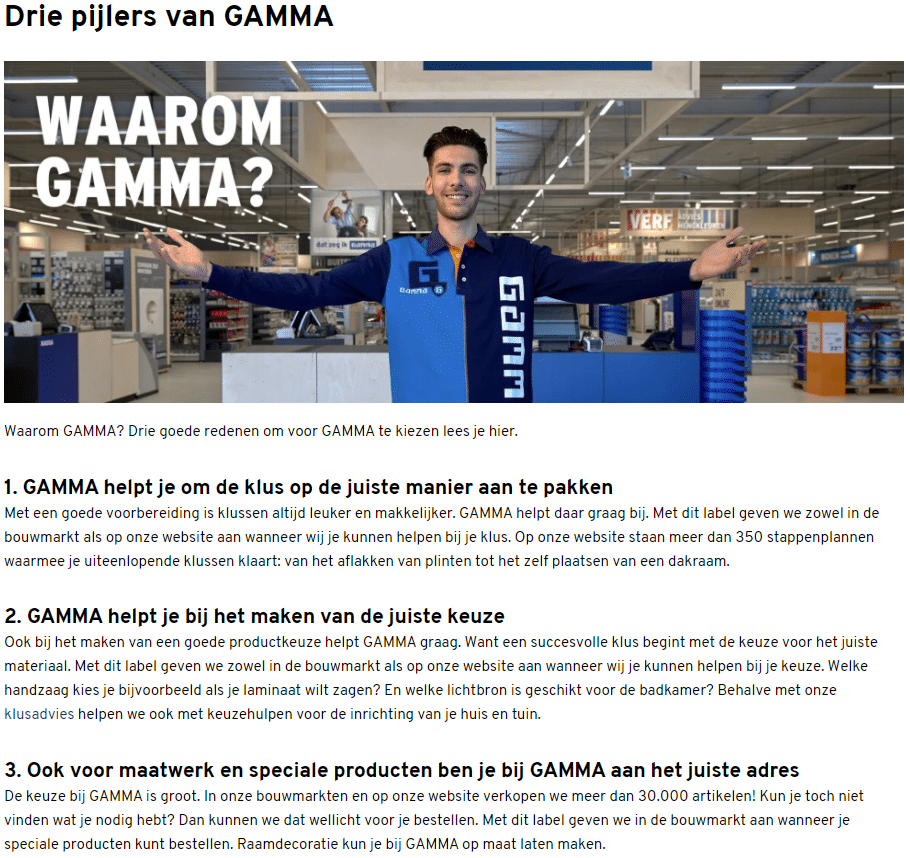
These three pillars align with the goal of “making everyone handy” and finding all products needed for the job. With step-by-step plans for different projects, decision-making assistance, advice on home improvement, and a selection of products that can be specially ordered or custom-made, Gamma gives substance to these three pillars. Gamma therefore plays a supportive role with very practical expressions, a role that is certainly not new to Gamma; 20 years ago, the company already offered DIY instructions on videotape. However, the emphasis is really on Gamma, because you can do it because Gamma makes it possible.
Marketing van Gamma
“That’s what I’m saying, Gamma.” It’s the slogan that the hardware store has been using since the 90s, supported by various advertising campaigns, of which the very successful series with neighbors Sjaak and Free-Willem ran for ten years. The two characters are characteristic of the no-nonsense attitude and humor that Gamma was known for for many years. A few years before the repositioning, the campaign had to make way for a different direction of the campaigns, but Gamma still regularly uses a variation on “That’s what I’m saying, Gamma,” such as “I’m recycling that” and “I’m saving that.” Since its repositioning, Gamma has been more focused on families, working together on projects, and the emotions of doing DIY projects, with the appropriate slogan “I can do it – Gamma.”
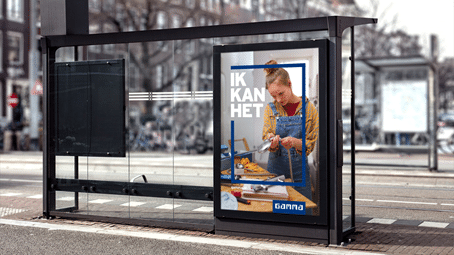
50 years of Gamma: new campaign centers on quirky ways of DIY
In 2021, Gamma celebrates its fiftieth anniversary with a new campaign: “DIY is in our genes.” This campaign also focuses on self-made projects and families, and it’s said to be an ode to the quirky ways of DIY that we pass on from generation to generation. In addition to campaign materials on radio, TV, and in the streets, Gamma is running a social media campaign in which DIYing families and friends are at the forefront.
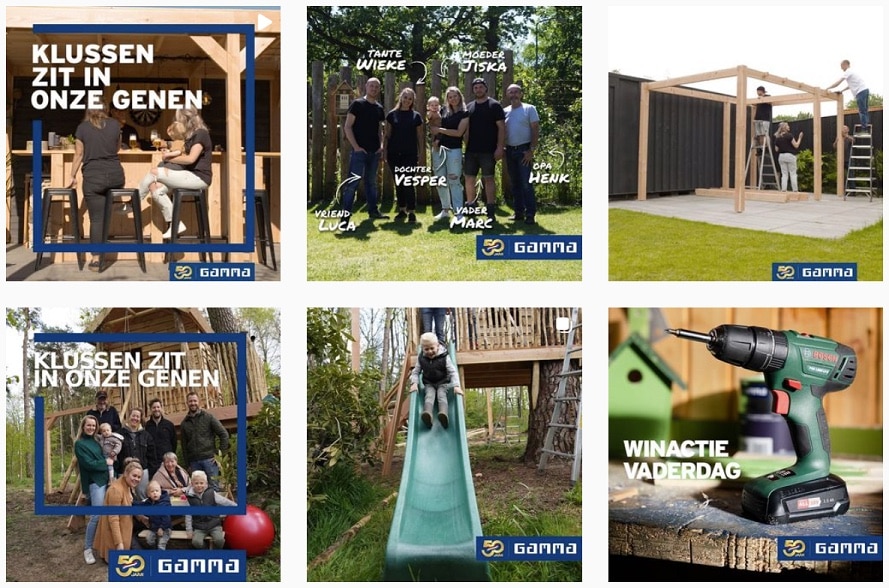
Positioning Karwei
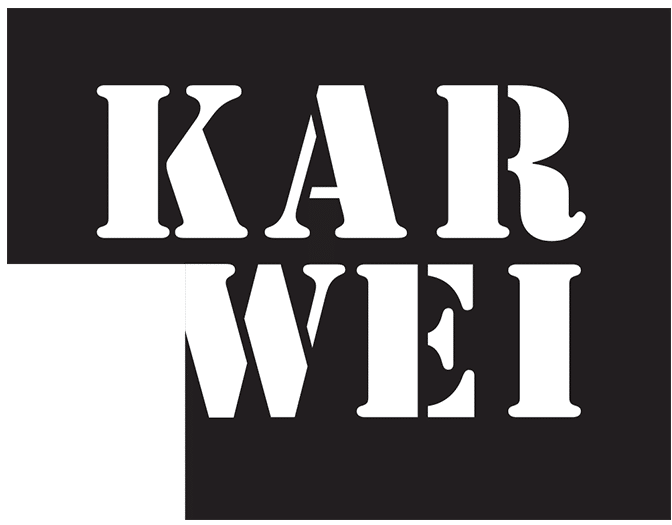 Before we pass judgment on Gamma’s positioning, let’s put it in perspective and analyze the positioning of its main competitors. We’ll start with its little sister, Karwei: the tasteful hardware store. Like Gamma, Karwei is part of Intergamma and has recently been repositioned. Perhaps the most important result of this is that Karwei is one of the few hardware stores that does not focus on major construction projects, but rather on their finishing touches. Karwei talks about trends and combines curtains, wallpaper, furniture, and home accessories in tasteful ways.
Before we pass judgment on Gamma’s positioning, let’s put it in perspective and analyze the positioning of its main competitors. We’ll start with its little sister, Karwei: the tasteful hardware store. Like Gamma, Karwei is part of Intergamma and has recently been repositioned. Perhaps the most important result of this is that Karwei is one of the few hardware stores that does not focus on major construction projects, but rather on their finishing touches. Karwei talks about trends and combines curtains, wallpaper, furniture, and home accessories in tasteful ways.
The emphasis is on home inspiration, style tips, and attention to small DIY projects to make your home cozier. This positioning around taste is strengthened by projects outside the (online) store, such as the collaboration with VT Wonen and online series.
Since 2014, Karwei has been working with VT Wonen, an online platform from DPG Media about living and styling. In addition to an online platform, there are several VT Wonen programs on TV, in which the products that Karwei and VT Wonen make and sell together are also in the spotlight. The hardware store with style also creates various online series about makeovers, such as “De Smaakbus.”
Positioning Praxis
“Praxis says ‘For the makers’ and thereby comes close to Gamma: serious DIY projects and everything you need for them. Whether it’s materials, a step-by-step plan, or an instructional video, Praxis ensures that its customers can do it themselves. Like its competitor Gamma, Praxis offers hours of online DIY advice. The big difference is that at Praxis they immediately get to the point with tips and useful summaries, while at Gamma there is more room for a joke and they first explain why you should do something.”
Characteristic of the supporting role of Praxis is also the new “Phygital” concept: offline shopping like you do online. Or as Praxis describes it:
“An integral Praxis customer experience that revolves around convenience and experience. You physically experience the online convenience of an extensive range and inspiration. There are assortments in the store of which some products – such as large garden furniture sets or lighting – are only shown as a display model, and refer to the webshop for an actual purchase through a QR code.”
 With this new hybrid store, Praxis wants to meet the needs of its customers who increasingly shop online but still need a physical store for certain questions or products. You can also see this innovative way of providing customers with as much as possible in their needs, for example in the Augmented Reality calculation tool that Praxis launched in 2021. With the calculation tool, customers can easily and accurately measure the floor area with their smartphone, which Praxis wants to expand to measuring terraces and wall surfaces so that customers don’t have to come to the store as often:
With this new hybrid store, Praxis wants to meet the needs of its customers who increasingly shop online but still need a physical store for certain questions or products. You can also see this innovative way of providing customers with as much as possible in their needs, for example in the Augmented Reality calculation tool that Praxis launched in 2021. With the calculation tool, customers can easily and accurately measure the floor area with their smartphone, which Praxis wants to expand to measuring terraces and wall surfaces so that customers don’t have to come to the store as often:
“We see in practice that customers encounter problems. They buy too much or too little, which often means they have to come back again.”
The message of Gamma and Praxis seems very similar, but Praxis really knows how to put the customer first.
Positioning Hornbach
There is only one DIY store in the Netherlands that is looking for the best handyman: Hornbach. For years, this hardware store has been known for its humorous, tough, but also intimate commercials that focus not on the task at hand, but on the feeling it gives. In Hornbach’s characteristic commercials, the relationship with your tools, mating insects in your garden, and the beauty behind imperfect projects take center stage. The Hornbach brand seems to embody a constant struggle between the primitive nature of flexing your muscles and building something yourself and the beauty of love, nature, and craftsmanship.
https://www.youtube.com/watch?v=9T5scnnHfjI
Hornbach’s marketing is clearly different from that of its competitors, because what other hardware store would make Third DIY Day the central focus? Like its competitors, Hornbach also offers DIY advice, but there are a few notable differences, as stated by Hornbach:
“HORNBACH is there for the true go-getter. For people who make something new with pure willpower, passion, and their own hands. Or who want to refurbish something old. They paint, screw, drill, and saw until it’s just right. It’s our passion to support you in that. That’s why thousands of employees are ready every day.”
 Not only is the message different, but the assortment is also slightly different. For example, Hornbach has a much larger garden assortment, saunas, whirlpools, and a large assortment for fish, dogs, cats, rodents, birds, and reptiles. Hornbach also has a clear vision of corporate social responsibility, which manifests itself in various ways:
Not only is the message different, but the assortment is also slightly different. For example, Hornbach has a much larger garden assortment, saunas, whirlpools, and a large assortment for fish, dogs, cats, rodents, birds, and reptiles. Hornbach also has a clear vision of corporate social responsibility, which manifests itself in various ways:
- A collaboration with the UWV to reintegrate people into the workforce
- Healthy meals and a biannual free and anonymous health check for employees
- Only using FSC certified wood and minimizing waste in all branches
- New branches are built from materials that are 90% reusable at the end of their lifespan
- Minimal artificial lighting in stores
It is clear that Hornbach is all about people, feeling, and passion, giving it a very different message than its competitors.
Positioning Hubo
The pillars of Hubo are personal, skilled, informative, and professional. It is noteworthy that the emphasis is on customized solutions, such as insect screens, cabinets, security, and (outdoor) sun protection, where Hubo comes to the customer’s home for measurements or advice and even carries out the job. While Gamma and Praxis focus on the job itself and Hornbach puts people in the spotlight, Hubo chooses to put the solution first.
https://www.youtube.com/watch?v=YP5tWNEJGbs
What we find striking is the contrast between the communication in words and images. In commercials, we see Hubo taking care of everything for its customers, helping ducks cross the street and rescuing children’s balls from the ditch. On the website, however, we see a different message: “Hubo has been a household name for years and has the most experience”, “Hubo is one of the largest and most reliable chains”, and “every Hubo stands out in craftsmanship, customer friendliness, and expertise”.
Positioning of Gamma in positioning matrix
We will compare Gamma and its four competitors in the positioning matrix, which allows us to quickly understand the market.
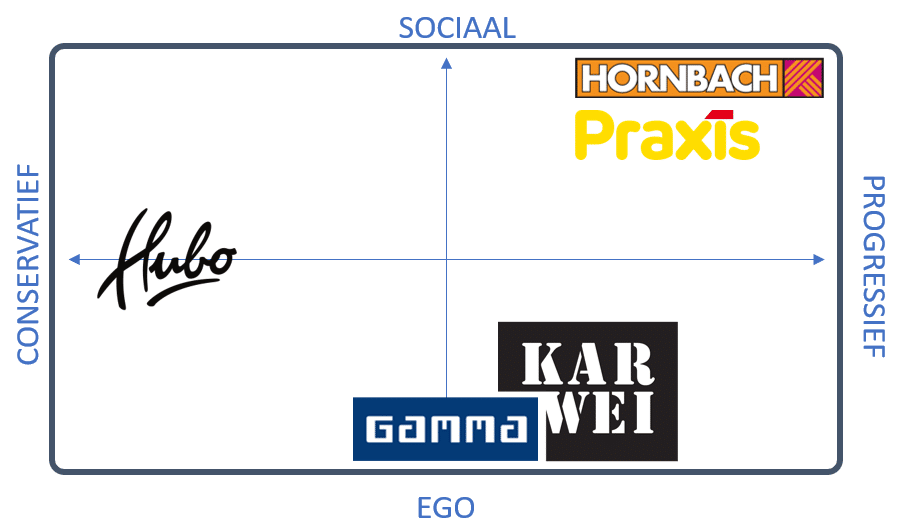
Brand archetype Gamma
Gamma’s positioning has revolved around Gamma itself for years, which is why the brand is positioned at the bottom of the positioning matrix. Gamma appears to be an Ally brand archetype at first glance, with terms such as “I can do it” and DIY tips. But if you look a little closer, it’s really all about the Gamma brand; they make it possible for you to do it. So we see Gamma as primarily the Hero brand archetype, in which Gamma is the hero.
Positioning of Gamma: our final verdict
Although Gamma is certainly making efforts to keep the brand innovative, we actually see it as quite conservative. Gamma is a brand that we have all known for years and thanks to memorable advertising campaigns, it is top of mind for many Dutch people. The current marketing efforts seem to be aimed at maintaining that position.
Interestingly, sister company Karwei has exactly the same image, but is more focused on the styling of your home than on drills, screws and wood. However, if you walk past the first three aisles at Karwei, you will also find the screws, doors and hardware. So what is really the difference between Gamma and Karwei, apart from a different look? We do not see the 100 million euros that have been spent in recent years to differentiate both positions.
Main competitor Praxis seems to be very similar to Gamma in many ways, and both organizations have been able to launch funny but also fairly meaningless campaigns. So what is the difference between both DIY stores and who will win the battle in the long term? Praxis knows how to be the Ally that puts its customers first. The brand is more to-the-point when it comes to DIY advice and tries to help its customers so well that they come to the store less often. It has successfully opened ten Praxis City branches in recent years, while Gamma Compact is stuck at two branches. Based on everything we now know about the different brands, we wonder why you wouldn’t choose Praxis? Based on the brand and marketing, we bet on Praxis and Hornbach in the long term, as they both take a much clearer proposition and deliver on it.
Unfortunately, Gamma’s biggest asset has nothing to do with marketing but with store density, and as long as it continues to legally fight against new branches of Praxis and other competitors, its branches will not disappear from the streets for the time being.
Do you want to know more about positioning and how you can use it yourself? Read our page on Positioning and find in-depth articles as well as dozens of examples and models for every possible positioning challenge.